DNA Methylation: What You Should Know
DNA methylation is a biological process that changes the structure of DNA. It can affect how tightly your genes are packaged and how easily they’re turned on or off. This process is an important part of normal cellular activity and helps protect cells from damage caused by stressors like toxins, poor diet, etc. Follow us on this week’s post to understand more about this process and its role in human health and longevity.
. . .
WHAT IS DNA METHYLATION
Methylation is the addition of a methyl group (-CH3) to a molecule. In the context of DNA, it’s the addition of a methyl group to one of the bases, cytosine (C). DNA is formed by two strands that form a helical structure (also called the double helix). Each strand is comprised of nucleotide bases, which are labeled A, T, C, and G.[i] There are four types of DNA methylation:
1. 5-methylcytosine: This is the most abundant and stable type of cytosine methylation.[ii]
2. 5-hydroxymethylcytosine: This is a byproduct of active DNA demethylation and can be reformed into cytosine methylation.
3. 6-methyladenine: This is found in bacterial DNA and is a result of the methylation of adenine.
4. N6-methyladenine: This is also found in bacterial DNA and is the result of methylation of adenine, but it’s a result of a different enzyme system.
The addition of a methyl group to cytosine alters the way the DNA is packaged and can affect how genes are expressed. Methylated DNA is less accessible to proteins that read DNA ( transcription factors) and can lead to gene silencing.
Silencing this process can change how genes are expressed. The methylated DNA is said to be “methylated” and the unmethylated DNA is said to be “unmethylated.” More than 70% of human CpG islands (sequences on chromosomes) are methylated.
DNA METHYLATION AND GENE EXPRESSION
When genes contain methyl groups, they tend to remain inactive and gene expression is decreased. This is because methylation helps to “wrap” the DNA around proteins called histones, which keeps them from being accessed by transcription factors. Transcription factors refer to a group of proteins that bind to the DNA and help turn genes on or off.
Even though methylation can decrease gene activity, this process is important for normal cellular functioning. For example, it helps control inflammation by turning off genes that promote inflammation. It also helps turn off tumor suppressor genes in cells that don’t need to divide – like heart or nerve cells.
That being said, when it’s dysregulated, improper methylation has been linked with a variety of diseases, including cancer, Alzheimer’s disease, and autism.
The addition of a methyl group can also change the physical shape of the DNA molecule, making it harder for transcription factors to bind to it.
On the other hand, when genes are unmethylated, they tend to be turned on and gene expression is increased. When genes lack these methyl groups, the proteins they encode are more likely to be produced. This is why methylation can affect things like cancer development, as well as normal cell function.
HOW DOES DNA METHYLATION AFFECT THE BODY
DNA methylation is a necessary part of normal cellular function because it protects against stressors that can damage DNA. Cells are constantly under attack from harmful substances, radiation, toxins, poor diet, etc., so they have to be able to protect themselves. DNA methylation helps to do this by silencing genes that could cause damage.
When the body is healthy, DNA methylation works properly and everything runs smoothly. However, when the body is not healthy, it can lead to problems with methylation. For example, when a person is stressed out or has a poor diet, their cells become stressed and DNA methylation decreases.
PROBLEMS WITH DNA METHYLATION IN THE BODY
What causes improper methylation in the body?
There are a few things that can cause problems with methylation, including:
- Nutritional deficiencies: A person who is deficient in certain vitamins and minerals (like B6, B12, zinc, and magnesium) may have problems with methylation.
- Environmental toxins: Toxins from the environment can also interfere with methylation. These toxins include things like pesticides, herbicides, plastics, and heavy metals.
- Inflammation: When the body is under chronic stress or has high levels of inflammation, it can have trouble with methylation. This is because high levels of free radicals can damage DNA and lead to problems with methylation. Methyl groups also help protect cells from free radical damage.
- Age: As we get older, our ability to methylate decreases. This is because as we age, we lose cells that help with methylation, and our DNA becomes more susceptible to damage.[iii]
- Genetics: Some people are born with genes that make it harder for them to methylate DNA properly.
DNA METHYLATION & LONGEVITY
While there is much to be discovered on DNA Methylation and longevity, there are some early indications that it may be involved in the aging process[iv]. One study showed that people with high levels of methylated DNA lived longer than those with low levels of methylated DNA. Another study showed that when cells are unable to methylate DNA, they age more quickly. More research is needed to determine the role of DNA methylation in longevity, but these early findings suggest that it may be important.
CONCLUSION
DNA methylation is a complex process that plays an important role in normal cellular function. When it’s properly methylated, it helps to protect against environmental stressors and inflammation. It also plays an essential role in mitochondrial function, which is important for energy production.
However, when the body becomes stressed – whether it’s because of deficiencies, toxins, inflammation, age, genetics, or other factors – then DNA methylation can become impaired. This can lead to a variety of problems, including cancer, neurodegenerative diseases, and other health issues. It’s important to understand how it affects you and what changes can be made for optimal health. We hope this article has helped shed some light on what DNA methylation is and how it works in your body. Follow us next week!
Disclaimer: The content is not intended to be a substitute for professional medical advice, diagnosis, or treatment. Additionally, the information provided in this blog, including but not limited to, text, graphics, images, and other material contained on this website, or in any linked materials, including but not limited to, text, graphics, images are not intended and should not be construed as medical advice and are for informational purposes only and should not be construed as medical advice. Always seek the advice of your physician or another qualified health provider with any questions you may have regarding a medical condition. Before taking any medications, over-the-counter drugs, supplements or herbs, consult a physician for a thorough evaluation. Always seek the advice of your physician or other qualified health care provider with any questions you may have regarding a medical condition or treatment and before undertaking a new health care regimen, and never disregard professional medical advice or delay in seeking it because of something you have read on this or any website.
[i] https://www.genome.gov/genetics-glossary/Deoxyribonucleic-Acid
[ii] https://pubchem.ncbi.nlm.nih.gov/compound/5-Methylcytosine
[iii] https://www.ncbi.nlm.nih.gov/pmc/articles/PMC3482848/
[iv] https://pubmed.ncbi.nlm.nih.gov/16565708/

 IfHO
IfHO
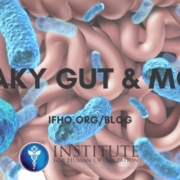

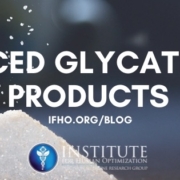
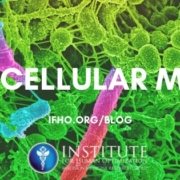

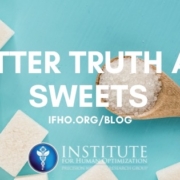
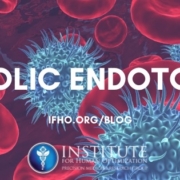



Your blog got me to learn a lot,thanks for sharing,nice article